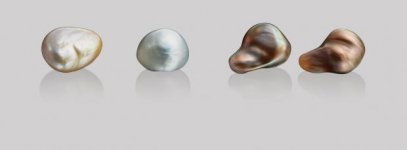SteveM
Well-known member
- Joined
- Jan 29, 2007
- Messages
- 2,112
The rules are well-intentioned but the end consumer does not read FTC directives, and we don't hear much about vendors being fined or jailed for their transgressions.
It occurs to me now that it would be far more effective to reverse the equation and specify 'natural' when referring to 'natural pearls.' This is what is done in practice anyway. Since the burden of proof is upon the seller to justify collectible pricing, the control system—as imperfect as it may be—is already in place.
Perhaps too logical—like legalization of drugs!
It occurs to me now that it would be far more effective to reverse the equation and specify 'natural' when referring to 'natural pearls.' This is what is done in practice anyway. Since the burden of proof is upon the seller to justify collectible pricing, the control system—as imperfect as it may be—is already in place.
Perhaps too logical—like legalization of drugs!
Last edited:

